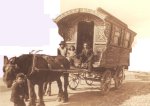 |
Welcome! Alsace, France |
 |
 |
Welcome! Alsace, France |
 |
Some Brief History of Alsace
The Alsace-Lorraine region has been contested by France and Germany since there was a France and a Germany. The natural boundary to the east is the Vosges mountain range in France, and to the west, so to speak, is the Rhein River. France, naturally, has attempted to push its border to the Rhein. It has succeeded in this latter move after WWI and WWII. To my mind, this region has been German speaking since time immemorial, as evidenced by place names and surnames. To the French, it is the inverse!
Alsace became part of Lotharingia in the Holy Roman Empire, the first French domination, under Charlemagne. In 925, Alsace became part of the German duchy of Alemannia and remained German for 800 years. In 1648, with the " Thirty Years War," Alsace was placed under French sovereignty. After the Franco-Prussian War (1870-1871), Alsace and Lorraine were incorporated into Germany. In 1919, after the World War I defeat of Germany, Alsace-Lorraine were returned to France once again. Finally, during World War II, the territory was taken by Germany but France regained it after Germany's defeat in 1945.
In Alsace today, the French language is dominant. The local German dialect is now called Alsatian, and is still spoken. Because of the past, the culture of this region contains both French and German elements .
The Alsace is geographically on the plain of the Rhine and on the German side of the Vosges mountain range in France. Some of the old cities include: Obernai, Riquewihr, Kaysersberg, Colmar, and Strasburg.
Source (off site)(note I have rewritten, and, I will state outright, slanted the history as I see it from my unique perspective.)
The following information is from Jean-Claude Mégret, a French Rom, who belongs to de Romano Yekhipe France. M. Mégret was kind enough to send us this information on the Patrin Roma Culture list:
Ziegler or Siegler is an Alsacian Manush name, well known at the begining of nineteenth century. This name is derived directly from Zigeuner > Ziginer > Zigner > Zigler. Generally, these Zieglers were often connected with Reinhardt and came from the suroundings of Bitche in Bas-Rhin, at the frontier with Palatinate. They often served in the Hesse and Palatinate armies. I found a Madeleine Siegler born in 1816. In the twentieth century, we had in France the most famous Manush painter Torino Ziegler almost as famous as Django Reinhardt.
Today, Bitche is listed as in Moselle (France), while Bas-Rhin is listed as immediately to the west of Moselle (France). At least we have a good idea of from where these folk probably originated.
This coorelation raises the interesting possibility that these Rom Zieglers were British "Hessian" mercenaries during the revolution, who remained behind and settled in Barnwell County, South Carolina.
Anyone with information on Rom (Gypsies) in this area please contact me.
Copyright ©1997-2000, Dr. Frank Oliver Clark. These documents may be freely used for private purposes, and included in your own genealogy. However, this document is copyrighted and may not be sold, nor given to anyone who may attempt to derive profit from same. Wording edited by Tyler Hargreaves 15 July 2001.